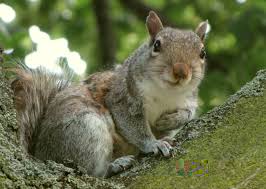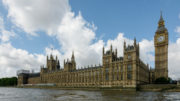Infestation by pests and vermin such as cockroaches or rats could make any property uninhabitable. Disrepair or poor building design and unhygienic living conditions can lead to infestation by cockroaches, ants, mites, silverfish, bedbugs, fleas, rats or mice
 .When it comes down to deciding who is responsible dealing with a pest problem, there is often disagreement between the landlord or agent and the tenant.
.When it comes down to deciding who is responsible dealing with a pest problem, there is often disagreement between the landlord or agent and the tenant.
Research earlier this year discovered that a quarter of students have vermin in their private student accommodation – from slugs to mice. The report also found that over half of students experience problems getting their landlord or letting agent to deal with pest problems.
Pat Barber, Chair of the Association of Independent Inventory Clerks comments: ‘Tenants have unrealistic expectations and don’t want to take responsibility for anything. They sometimes think that their landlord should pay for everything no matter what.’
‘Time and time again we see tenants complaining about a pest problem that is caused by their poor hygiene. An infestation of mice was found during a recent property inspection, the tenants complained of mice faeces in cupboards and on the kitchen floor. Unsurprisingly, the kitchen was in a really dirty condition with grease, crumbs and other debris everywhere. The tenants were advised to clean up their act, as they were encouraging mice by leaving plenty of food for them to eat.’
The AIIC has put together some guidelines on what the tenant and the agent or landlord is responsible for:
Landlord Responsibilities
- Wasps –The landlord will need to arrange and pay for removal of a nest that is apparent at the start of a tenancy.
- Rats – If this is an ongoing problem with the property, it is the Landlord’s responsibility to pay for regular treatment.
- Fleas – If there is a flea infestation is present at the start of a new tenancy, then it is again down to the landlord to have the carpets and upholstery fumigated if the tenant’s pets are not the cause of the problem
Tenant Responsibilities
- Bees –They are a protected species and swarms should only be removed by a professional bee-keeper. It is the responsibility of the tenant to pay for removal of a bees nest.
- Ants – These can be a real nuisance and will return, usually to the kitchen time and time again. Stricter cleaning regimes will discourage them. There are a multitude of treatments available from supermarkets or hardware shops.
- Wasps – if a nest appears in the middle of a tenancy removal is at the tenants cost.
- Mice – if this problem was not apparent on the day of check in removal measures are at tenants cost. Again ensuring that no food debris if left lying around will discourage them.
What tenants have to live with….
- Bats – Any nesting of bats will have to be ignored as they are a protected. Generally they will not cause too much damage, but their droppings can be fairly disgusting.
- Squirrels – these are a real nuisance and are known to chew through just about anything, electrical wiring is a particular delicacy. It is illegal to trap and kill squirrels during their breeding season – but unfortunately this is just the time when they want to inhabit a property. A pest control company will need to be contacted so they can advise the best way to proceed. This is usually a landlords cost.







Be the first to comment on "Pests in your rental property"